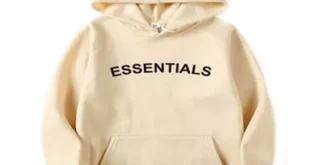When it comes to carrying a 1911, a legendary pistol known for its performance and reliability, one of the most critical decisions you’ll face is choosing the right holster. Two popular options are Outside the Waistband (OWB) and Inside the Waistband (IWB) holsters. Each has its unique advantages and drawbacks, and understanding these can help you make an informed choice. In this article, we’ll explore the OWB vs. IWB custom 1911 holsters, examining their features, pros and cons, and offering insights to help you determine which one is right for you.
Understanding OWB and IWB Holsters
What is an OWB Holster?
An OWB holster is designed to sit outside the waistband of your pants, typically attached to your belt. These holsters are known for their accessibility and comfort during casual wear. They often come in various materials, including leather and kydex, and can be molded for a precise fit to your firearm.
What is an IWB Holster?
Conversely, an IWB holster fits inside your waistband, concealing your firearm from view. This design is preferred for those who prioritize discretion and need to keep their firearm hidden. IWB holsters can be a bit more challenging to draw from, but they offer excellent concealment and are often more comfortable for extended wear.
The Pros and Cons of OWB Holsters
Advantages of OWB Holsters
- Accessibility: OWB holsters allow for quicker access to your firearm. Drawing your weapon is usually more fluid compared to IWB designs.
- Comfort: Many users find OWB holsters more comfortable for extended wear, especially when using a well-designed holster that contours to the body.
- Variety: There is a broader range of styles, materials, and designs available for OWB holsters, allowing for personalization to fit your lifestyle.
Disadvantages of OWB Holsters
- Concealment: The primary downside of OWB holsters is concealment. They are more challenging to hide under clothing, making them less suitable for discreet carry.
- Printing: When wearing OWB holsters, there’s a higher chance of “printing,” where the outline of the firearm becomes visible through clothing.
The Pros and Cons of IWB Holsters
Advantages of IWB Holsters
- Concealment: IWB holsters excel in concealment. They sit snugly against the body, making it easier to hide your firearm under clothing.
- Comfort for Concealed Carry: Many users report that, when properly fitted, IWB holsters can be very comfortable for daily carry.
- Reduced Printing: Since the firearm is concealed within the waistband, the chances of printing are significantly lower compared to OWB options.
Disadvantages of IWB Holsters
- Access: Drawing from an IWB holster can be more cumbersome than an OWB holster, especially if you’re wearing thicker clothing.
- Comfort: While some find IWB holsters comfortable, others may experience discomfort, especially with prolonged wear. Factors such as body type and the thickness of the waistband can play a role.
Key Considerations for Choosing Between OWB and IWB Holsters
Comfort and Fit
Comfort is subjective and can vary from person to person. Factors such as body shape, clothing style, and activity level should be considered. It’s essential to try on different holsters and see which design feels best for your specific needs.
Purpose of Carry
Consider why you need the left handed shoulder holster. If you plan to carry in a highly visible area or during outdoor activities, an OWB holster might be suitable. However, if you need to blend in during everyday activities, an IWB holster may be more appropriate.
Legal and Situational Factors
Know the laws in your state regarding concealed carry. Some states have specific regulations that might influence your choice. Additionally, consider your daily activities and how they might impact your holster selection.
Statistical Insights on Holster Preferences
According to a survey by the National Shooting Sports Foundation (NSSF), approximately 72% of gun owners in the U.S. prefer OWB holsters for open carry, citing comfort and accessibility as key factors. In contrast, a report from Gun Culture 2.0 indicates that 64% of concealed carriers choose IWB holsters, emphasizing the importance of concealment and reduced printing.
A Blend of Both Worlds
Many firearm enthusiasts opt for a hybrid approach, utilizing both OWB and IWB holsters depending on their needs and circumstances. This strategy allows for flexibility in different environments, making it possible to adapt to various situations seamlessly.
Conclusion
Ultimately, the choice between Custom OWB vs. IWB Holsters for 1911: Which One is Right for You? comes down to personal preference, lifestyle, and specific use cases. Both options have their strengths and weaknesses, and understanding these can guide you toward the holster that suits your needs best.
Before making a decision, consider trying both styles to see which feels more comfortable and functional for your daily routine. Whether you prioritize concealment or accessibility, the right holster can enhance your overall experience with your 1911. Always remember, the best holster is the one that you feel most confident carrying.
 The Random Collective Where Curiosity Meets Creativity
The Random Collective Where Curiosity Meets Creativity





